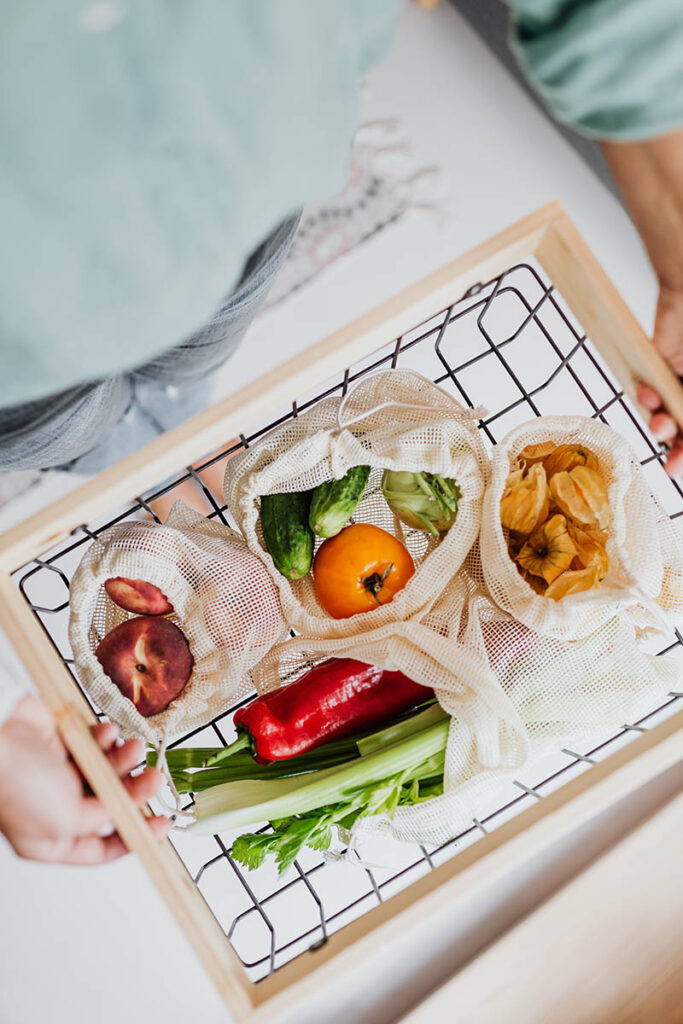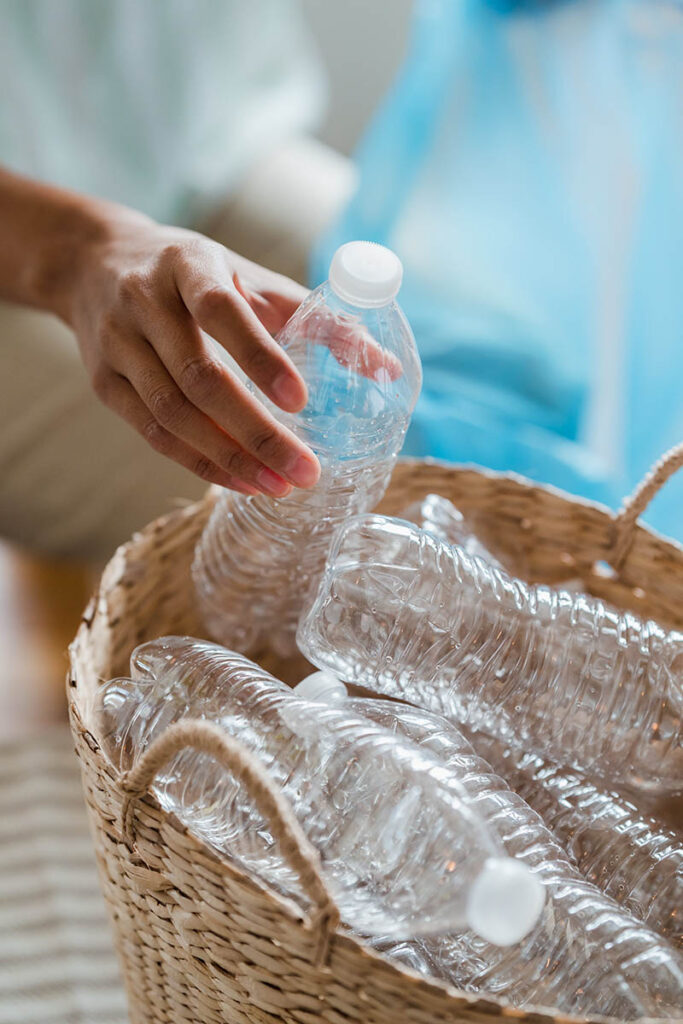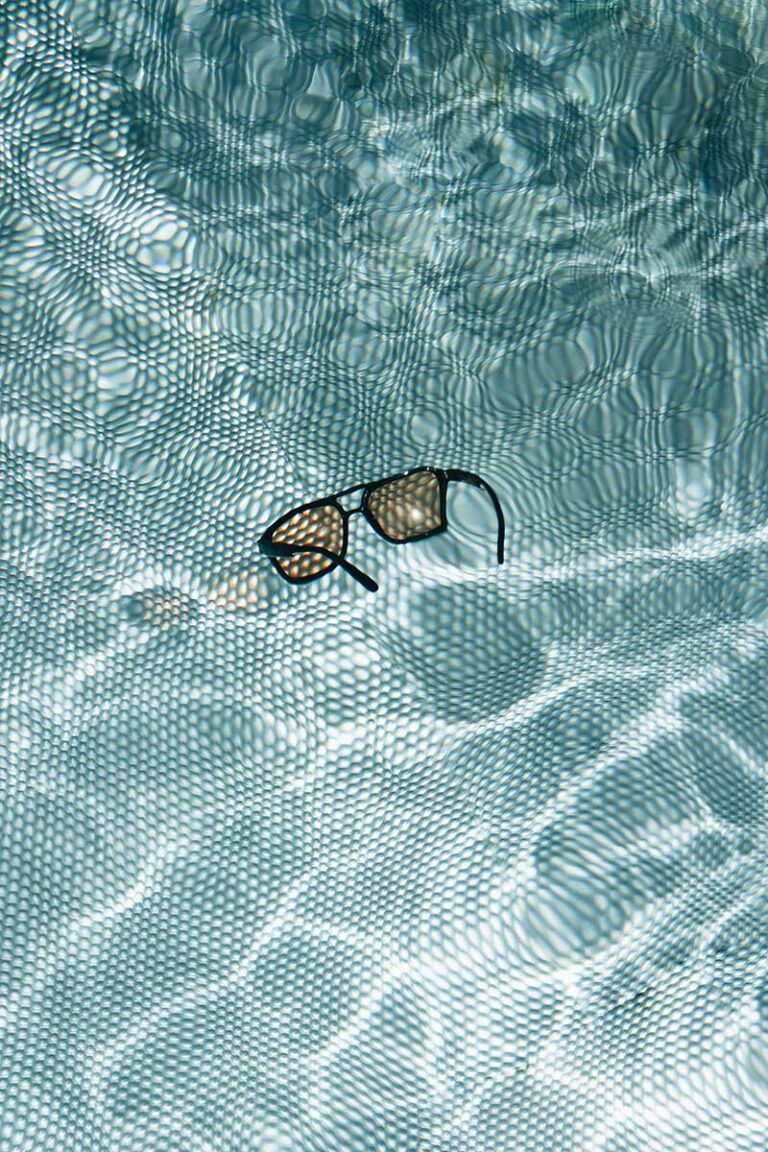10 Easy Ways to Reduce Waste at Home
If you’re concerned about the environment and want to do your part to reduce waste at home, you’re not alone. Many people are looking for ways to live more sustainably and minimize their carbon footprint, starting by reducing household waste.
By minimizing the amount of waste you generate, you can help protect the planet and conserve natural resources.
Fortunately, there are many easy and effective ways to reduce waste at home without sacrificing convenience or comfort.
So, if you already read our other blog posts on zero-waste lifestyle, but want more practical, easy tips to incorporate into your daily life, you’re in the right place. Here are 10 easy ways to reduce waste at home.

What Is Actually Waste?
Unlike what we have always thought, waste is not just trash. Waste can be categorized as anything that we no longer have a use for or cannot be used anymore. This includes food, paper, plastic, glass, and much more.
The amount of waste we generate at home is staggering and it has a big impact on the environment. When waste is not properly managed, it can have negative impacts on the environment, human health, and the economy.
One of the biggest problems with waste is that it takes up space in landfills. Landfills are designed to hold waste, but they can only hold so much.
Another problem with waste is that it can release harmful chemicals into the environment. When waste decomposes, it can produce methane gas, which is a potent greenhouse gas that contributes to climate change.
Waste can also release toxins into the soil and water, which can harm wildlife and humans. In the long run, it can even affect the quality of our food and water sources.
So what can we do to minimize the amount of waste we generate at home? The quick and easy answer is to reduce them.
Reducing waste at home is a great step towards a sustainable lifestyle and it can be relatively simple.
You don’t have to make drastic changes to your lifestyle, just a few small changes can greatly impact the amount of waste you produce. And remember, every little bit counts.
Of course, reducing waste on a higher, more advanced and complicated level is best done over time. But it all starts from making small changes in our daily habits and routines.

Why We Should Reduce Waste
Reducing waste is important for many reasons. First, it helps to conserve natural resources and reduce pollution.
When we use fewer products and create less waste, we put less strain on the environment. By reducing waste, we can help to protect our planet for future generations.
Second, reducing waste can save you money. When you buy fewer products, you save money on the cost of those products.
Additionally, when you create less waste, you may be able to save money on trash collection fees. So, think about how much money you can save by just making a few small changes in your daily habits.
Third, reducing waste can also lead to a healthier lifestyle. Many products, such as cleaning supplies, contain harmful chemicals that can be harmful to your health.
By reducing the amount of these products that you use, you can reduce your exposure to these chemicals, which can help to improve your overall health.
Finally, reducing waste can help promote sustainability. Although it may sound abstract for many reasons, sustainability means living in harmony with the natural environment and ensuring that future generations will have access to the same resources we do.
All in all, one small step towards reducing waste can have a big impact on our planet and future. So, let’s all do our part in making small changes to our daily habits and routines, in order to make a big difference for the environment and ourselves.

1. Start Composting at Home
If you want to reduce your waste at home, composting is a great place to start. Composting is the process of turning organic waste into nutrient-rich soil.
It’s a simple and effective way to reduce the amount of waste you produce and help the environment.
Choosing a Compost Bin
There are many different types of compost bins available, from simple DIY designs to more advanced models with features like tumbling and aeration.
When choosing a compost bin, consider the amount of space you have available, the type of waste you’ll be composting, and your budget.
What You Can Compost
Composting is a great way to reduce the amount of waste you produce, but it’s important to know what you can and can’t compost. Here are some items that you can compost:
- Fruits and vegetables scraps
- Coffee grounds and filters
- Tea bags
- Eggshells
- Yard waste (grass clippings, leaves, etc.)
- Shredded paper
- Cardboard
And here are some items that you should not compost:
- Meat, fish, and dairy products
- Fats, oils, and grease
- Pet waste
- Diseased plants
- Weeds that have gone to seed
- Coal or charcoal ash
If you’re unsure how to start, a Bokashi kit is helpful as it provides step-by-step instructions and contains everything you need to get started. Its size is quite compact, making it perfect for small spaces as well.
2. Implementing Recycling
Recycling is a simple and effective way to help the environment and reduce your carbon footprint. Here are some tips to help you implement a recycling system at home.
Setting Up a Home Recycling System
Before you start recycling, you need to set up a system that works for you. Here are some steps to help you get started:
- Check with your local recycling program to see what materials they accept. This will help you determine what you can and cannot recycle.
- Purchase recycling bins or containers. You can use plastic bins, cardboard boxes, or even old trash cans. Label each bin with the materials that can be recycled.
- Place the recycling bins in a convenient location. This can be in your kitchen, garage, or outside. Make sure the bins are easily accessible and visible.
- Educate your family members on how to use the recycling system. Explain what materials can be recycled and how to properly dispose of them.
What You Can Recycle
Here are some common materials that can be recycled:
- Paper
- Cardboard
- Glass
- Plastic Bottles
- Aluminum Cans
Remember, not all materials can be recycled, and not all parts of a material can be recycled.
For example, pizza boxes cannot be recycled if they are greasy or have food residue on them. Always check with your local recycling program for specific guidelines.

3. Reducing Plastic Usage
Reducing plastic usage is one of the most effective ways to reduce waste at home. And plastic comes from, basically, two sources: packaging and single-use items, such as water bottles and straws.
Alternatives to Plastic Products
There are many alternatives to plastic products that you can use in your daily life. Some examples include:
- Reusable water bottles made of glass, stainless steel, or aluminum
- Cloth grocery bags instead of plastic bags
- Beeswax wraps instead of plastic cling wrap
- Glass or metal food storage containers instead of plastic ones
- Bamboo or metal straws instead of plastic ones
- Wooden or bamboo utensils instead of plastic ones
Although you don’t have to switch everything at one time, you can gradually make more eco-friendly choices when shopping. This not only helps reduce waste, but also supports businesses that are environmentally conscious.
Benefits of Reducing Plastic
Reducing plastic usage has many benefits, but do you know what they are? Here are a few reasons why reducing plastic is important:
- Environmental protection: Plastic waste can take hundreds of years to decompose, and it can harm wildlife and pollute our oceans. By reducing plastic usage, you can help protect the environment.
- Health benefits: Some plastic products contain harmful chemicals that can leach into food or water. By reducing plastic usage, you can reduce your exposure to these chemicals.
- Cost savings: Many alternatives to plastic products are reusable, which can save you money in the long run.
Overall, reducing plastic usage is a simple and effective way to reduce waste at home and protect the environment without compromising your daily needs.
4. Smart Shopping Habits
Even with the availability of eco-friendly products, it is important to develop smart shopping habits to reduce plastic usage, save money, and support sustainable businesses. Here are some tips to keep in mind when shopping:
Buying in Bulk
Buying in bulk can be a great way to save money and reduce waste. When you buy in bulk, you can purchase just the amount you need, which helps to reduce food waste.
It also helps to reduce packaging waste, as bulk items are often sold in reusable containers or in larger quantities that require less packaging.
Before you buy in bulk, make sure you have a plan for using the items you purchase. Buying in bulk can be a waste of money and resources if you end up throwing away unused items.
Consider buying in bulk for items you use frequently, such as grains, nuts, and dried fruits. Otherwise, stick to buying smaller quantities to avoid waste.
Bringing Your Own Bags
Plastic bags are one of the biggest sources of plastic waste. They often end up in landfills or polluting our oceans and harming marine life.
To reduce your plastic usage, bring your own reusable bags when shopping. You can use cloth bags, canvas totes, or even repurpose old t-shirts into bags.
Some stores even offer discounts for customers who bring their own bags, so not only are you reducing plastic waste, but you can also save money.
Choosing Products with Less Packaging
For example, instead of buying individually wrapped snacks, consider purchasing a larger bag of the same snack and portioning it out at home.
You can also choose products that come in recyclable or biodegradable packaging. Look for packaging made from materials like paper, cardboard, and glass.

5. Reusing Items
Reusing items means giving them a second life and preventing them from ending up in landfills and contributing to waste.
Some simple ways to reuse items include using old glass jars for food storage, repurposing old clothes into rags, and choosing refillable containers instead of single-use ones.
You can also visit secondhand stores or online marketplaces to find gently used items at a lower cost instead of always buying new products.
Creative Ways to Reuse
You have an eye for creativity and can think outside the box? Then you can come up with even more ways to reuse items, just like this:
- Glass Jars: Instead of throwing away glass jars, reuse them as food containers, vases, or even candle holders. You can also use them as storage for small items like buttons or screws.
- Old Clothes: Instead of throwing away old clothes, consider repurposing them. You can turn old t-shirts into rags for cleaning, or use old jeans to make a denim purse or a patchwork quilt.
- Plastic Bags: Instead of throwing away plastic bags, reuse them as garbage bags, or take them to the grocery store to use as shopping bags.
- Newspapers: Instead of throwing away newspapers, use them as wrapping paper, or cut them into strips to use as packing material.
6. Donating and Swapping Items
Donating items that are still in good condition is another way to give them a new life. Plus, it helps others in need and reduces waste. You can donate to thrift stores, charities, or even have a yard sale.
Donate
Consider donating your unwanted items to a local charity or thrift store. These organizations can often use items like clothing, furniture, and household goods to help those in need.
Before donating, make sure your items are clean and in good condition. Check with the organization to see if they have any specific guidelines or restrictions on what they can accept.
Sell
If you have items that are still in good condition, you may be able to sell them online or at a garage sale. Online marketplaces like eBay, Craigslist, and Facebook Marketplace can be great places to sell items like electronics, furniture, and clothing.
When selling items online, make sure to take clear photos and provide accurate descriptions to attract potential buyers.
Swap
Consider organizing a swap with friends or neighbors to exchange unwanted items. This can be a fun way to get rid of items you no longer need while also finding something new for yourself.
You can also look for local swap events in your community, like clothing swaps or book exchanges. This not only helps reduce waste but also promotes a sense of community and sharing.

7. Reducing Kitchen Waste
Kitchen waste is one of the biggest contributors to landfills. In fact, it’s estimated that around one-third of all food produced in the world is wasted. By making a few simple changes in our daily routines, we can reduce food waste and help the environment.
Meal Planning
Meal planning is an effective way to reduce food waste. By planning your meals in advance, you can buy only the food you need and avoid buying too much food that may go to waste.
You can create a meal plan for the week or month, depending on your preference. Consider planning your meals around what you already have in your pantry and fridge to avoid buying more than necessary.
Proper Food Storage
When food is stored correctly, it lasts longer, reducing the likelihood of spoilage and waste. Here are some tips for proper food storage:
- Store fruits and veggies in the refrigerator crisper drawer.
- Keep meat, poultry, and fish in the coldest part of the refrigerator.
- Store dry goods like flour, sugar, and rice in airtight containers to keep them fresh.
- Freeze leftovers and unused portions of food to use at a later time.
Composting
Composting is a great way to reduce food waste and create nutrient-rich soil for your garden. You can compost fruit and vegetable scraps, coffee grounds, eggshells, and more.
If you don’t have space for a traditional outdoor compost pile, you can also try vermicomposting (composting with worms) or look for community composting programs in your area.
Donating to Food Banks
Instead of throwing away perfectly good food, consider donating it to a local food bank or shelter. Many organizations accept non-perishable and unopened perishable items. It’s a win-win situation – you reduce food waste and help those in need.
8. Reduce Paper Usage
Besides plastic, we use a lot of paper in our daily lives, from packaging to office supplies. Reducing paper usage is not only environmentally friendly but also saves money and resources.
Switch to e-Versions
From books and newspaper to paperless billing and receipts, many items that were traditionally on paper can now be accessed digitally.
Switching to e-versions not only saves paper but also reduces clutter and makes documents easily searchable.
Print Double-Sided
If you must print something, always choose the double-sided option. This cuts your paper usage in half and also saves money on paper costs.
Some printers have the option to print double-sided without manually flipping the paper, making it even more convenient.
Reuse Paper
Before recycling or tossing out used paper, see if you can reuse it. Old printed documents can be cut into scrap paper for notes or grocery lists.
Envelopes can also be reused by placing a new label over the old one. Be creative and look for ways to give your paper a second life before discarding it.

9. Curb Single-Use Products
Single-use items like disposable razors, coffee pods, and plastic utensils are convenient, but they also contribute to waste. Imagine how many disposable products you use in a year and then multiply that by the number of people on Earth – it’s a staggering amount.
Opt for Reusable Alternatives
Instead of buying single-use products, opt for reusable alternatives. Although these reusable products can be more costly compared to their single-use counterparts, they will save you money in the long run and greatly reduce your environmental impact.
- Use a safety razor instead of disposable razors
- Switch to menstrual cups instead of tampons
- Cloth napkins can replace paper napkins
- Invest in a coffee maker with reusable filters instead of using coffee pods
- Silicone baking mats can replace parchment paper
- Bamboo toothbrushes can replace plastic toothbrushes
- Reusable water bottle and coffee cups can eliminate the need for single-use plastic bottles and cups.
You see, the list goes on, as long as you’re willing to make small changes, there are reusable alternatives for almost everything.
Not only will this cut down on waste, but it will also save you money in the long run and reduce your carbon footprint and environmental impact.
Say No to Plastic Bags
To reduce your use of plastic bags, invest in reusable shopping bags or bring your own bag when shopping. Not only will it save you money, it’s also more durable and better for the environment.
If you do end up with plastic bags, make sure to use them as many times as possible before disposing of them properly.
10. Conserve Energy
Using less energy not only helps the environment, but it can also save you money on your utility bills. Here are a few ways to conserve energy:
Turn Off Unnecessary Lights and Electronics
Make it a habit to turn off lights and unplug electronics when they’re not in use. This can greatly reduce your energy consumption and save you money on your electricity bill.
Switch to Energy-Efficient Light Bulbs
Replace traditional incandescent light bulbs with energy-efficient options like LED or CFL bulbs. These alternatives may cost more upfront, but they last longer and use less energy in the long run.
Adjust Your Thermostat
During hot summer months, set your thermostat a few degrees higher and use fans to cool off instead. In the winter, keep it a little cooler and wear layers to stay warm. This small adjustment can greatly reduce your energy consumption.
Unplug Chargers When Not in Use
Even when not actively charging a device, chargers still draw power from outlets. Make sure to unplug them when not in use to save energy and reduce your electricity bill.

To Sum It Up
As you can see, with these simple tweaks and habits, anyone, including you, can contribute to a healthier and more sustainable environment.
You don’t have to worry about making drastic lifestyle changes, but small actions truly make a difference, especially when you’re mindful of your consumption and waste habits.
So, we hope this list can inspire you to take action and do your part in protecting the environment. Together, we can make a positive impact and create a better future for the next generations!





